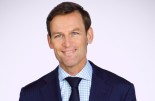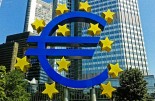MFS: Commentary ahead of ECB meeting
MFS: Commentary ahead of ECB meeting

By Annalisa Piazza, Fixed-Income Research Analyst at MFS Investment Management
The chances of a 75bp hike are non-trivial as inflation will persist well above target for longer and the ECB shows nervousness about the need to front-load its hiking cycle before the EMU economy officially enters recessionary territory later this year.
Our baseline scenario is for the ECB to hike policy rates by 50bp in September, October and December and then to pause, re-assessing the overall economic picture with rates at 1.5% which is somehow around 'neutral'. The debate around the need for a 50bp or 75bp hike is expected to be quite vivid this week but we suspect that the rationale for an 'orderly' but 'sustained' tightening (as mentioned by the French Governing Council member Villeroy at Jackson Hole) will prevail. Although the ECB's mandate remains price stability, an orderly tightening cycle (especially in the current unprecedented macro outlook) allows markets to avoid unnecessary volatility.
The narrative around the need of an aggressive hiking cycle is not fully convincing, as uncertainties around the macro outlook for the Eurozone remain elevated (i.e. risks of a complete shutoff of the flow of gas from Russia are non-negligible). That said, the ECB seems to be now more and more concerned about persistent inflation risks and less sensitive to a recession scenario.
The ECB policy stance in the medium term will be defined on the basis of the impact of current hikes on inflation and inflation expectations in the next 6 months or so, development of underlying inflationary pressures (such as wage negotiations) and global factors. As for the latter, the Fed's next moves will be extremely important as we struggle to see the ECB maintaining a more hawkish stance than the Fed for a prolonged period of time, even if there is a mis-match in terms of beginning of the hiking cycle.
From a market perspective, the risk/reward of further bear flattening in core European government bonds is less compelling than a couple of weeks ago as most of the ECB hiking cycle has already been priced in. If anything, we see chances that a hawkish ECB might push the market to price in a higher terminal rate that would weigh more on the belly of the curve. Additional risks come from possible comments from some of the ECB members about discussions around the end of the QE re-investments that would be another bearish signal and lead to some spread widening.








